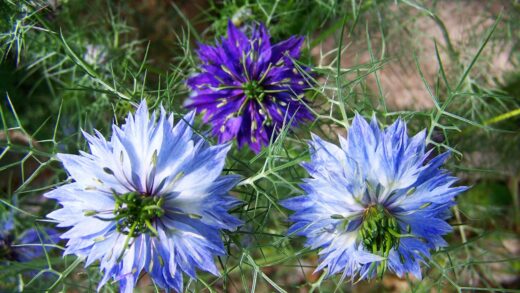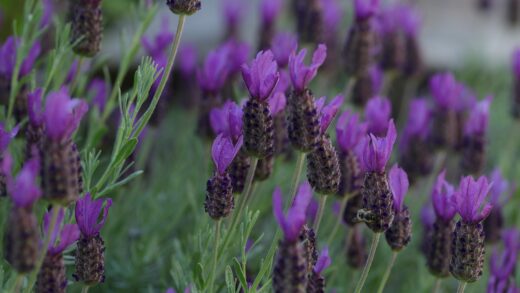Successfully guiding your Algerian ivy through the winter months requires a shift in your care routine to accommodate the changing environmental conditions. As a plant native to temperate climates, it is adapted to a period of slower growth or dormancy when temperatures drop and daylight hours shorten. Understanding how to adjust your watering, feeding, and placement of the plant during this time is crucial for ensuring it not only survives the winter but emerges healthy and ready for vigorous growth in the spring. Both indoor and outdoor specimens have specific needs that must be met to protect them from the stresses of the cold season.
For Algerian ivy grown indoors as a houseplant, the primary winter challenges are not typically the cold itself, but rather the reduced light intensity and the dry air created by indoor heating systems. The plant’s metabolic processes slow down significantly, meaning it requires less water and no fertilizer. The key to successful indoor winter care is to recognize this state of rest and adjust your practices accordingly to avoid common problems like overwatering and pest infestations that thrive in dry conditions.
Outdoor Algerian ivy, when grown within its suitable hardiness zones (typically zones 7-9), is quite cold-tolerant and can withstand freezing temperatures. However, in regions at the colder end of its range or during unusually severe winters, it can benefit from some form of protection to prevent damage to its foliage and roots. For plants grown in containers outdoors, protecting the root system from freezing is especially critical, as roots are far more vulnerable in a pot than they are in the ground.
This article will provide essential guidance on the proper winter care for your Algerian ivy, covering the specific adjustments needed for both indoor and outdoor plants. We will discuss how to manage watering and humidity, the importance of ceasing fertilization, and practical methods for protecting outdoor plants from frost and freeze damage. By following these professional recommendations, you can ensure your ivy remains a healthy and vibrant feature of your home or garden throughout the year.
Adjusting care for indoor ivy
As winter approaches, the most significant change you need to make for your indoor Algerian ivy is to reduce the frequency of watering. With shorter days and lower light levels, the plant’s growth slows to a near standstill, and its demand for water decreases dramatically. Continuing to water on a summer schedule is the fastest way to cause root rot. Before watering, you should allow the top one to two inches of the soil to dry out completely. For many plants, this may mean watering only once every two to three weeks instead of weekly.
More articles on this topic
The second critical adjustment is to stop all fertilization. During its winter dormancy, the ivy is not actively growing and therefore cannot utilize the nutrients provided by fertilizer. Feeding the plant during this resting period will only lead to a buildup of fertilizer salts in the soil, which can damage the roots and negatively impact the plant’s health when spring growth begins. You should cease fertilizing in the early autumn and not resume until you see the first signs of new growth in the spring.
Low humidity is a major challenge for houseplants in the winter due to indoor heating. Algerian ivy prefers higher humidity, and the dry air can cause the leaf edges to turn brown and crispy and can make the plant more susceptible to pests like spider mites. To counteract this, you should take steps to increase the humidity around your plant. Grouping it with other plants, using a pebble tray, or running a humidifier in the room can all be very effective at creating a more favorable microclimate.
Finally, consider the plant’s location. While light levels are naturally lower in winter, you should still aim to provide your ivy with the brightest indirect light possible to help it maintain its health. This may mean moving it to a different window, such as a south-facing one (though still protected from direct sun), for the duration of the winter. Also, be sure to keep the plant away from cold drafts from windows or doors, as well as from direct blasts of hot air from heating vents, as these sudden temperature fluctuations can cause stress.
Protecting outdoor plants in the ground
Algerian ivy planted in the garden is generally robust, but in areas that experience freezing temperatures, a few preparatory steps in the autumn can help it weather the winter successfully. The primary goal is to protect the root system and the base of the plant from extreme cold. One of the most effective ways to do this is to apply a thick layer of mulch around the base of the plants after the first hard frost of the season.
More articles on this topic
A two to four-inch layer of organic mulch, such as shredded bark, straw, or chopped leaves, acts as an insulating blanket for the soil. This helps to regulate the soil temperature, protecting the roots from the damaging effects of repeated freezing and thawing cycles. The mulch also helps to conserve soil moisture and will gradually break down over time, adding valuable organic matter to the soil. Be careful not to pile the mulch directly against the stems of the plant, as this can trap moisture and potentially lead to rot.
Ensuring the plant is well-hydrated before the ground freezes is also beneficial. Water your outdoor ivy thoroughly in the late autumn before the first deep freeze is expected. Moist soil freezes more slowly and retains heat better than dry soil, providing additional protection for the root system. This is particularly important for newly planted ivy that has not yet developed an extensive root system.
In regions that experience heavy snowfall, the snow itself can act as a natural and highly effective insulator, protecting the ground-level foliage and roots from colder air temperatures and harsh winds. While the exposed leaves of climbing ivy may suffer some dieback from wind and cold, the plant is typically root-hardy and will send up vigorous new growth from its base in the spring. Any winter-damaged foliage can be pruned away in the early spring to make way for the new shoots.
Overwintering ivy in containers
Algerian ivy grown in outdoor containers or pots is significantly more vulnerable to cold than plants in the ground. In a pot, the roots are exposed to the cold air from all sides, and the soil temperature can drop much lower and faster than the ground temperature. In climates where winter temperatures regularly fall below freezing, the roots of potted ivy can easily be killed, even if the plant is technically hardy in your zone. Therefore, special measures must be taken to protect them.
The most reliable method for overwintering potted Algerian ivy is to bring the containers indoors for the winter. You can place them in a cool, bright location like an unheated garage or basement that stays above freezing. In this cool environment, the plant will remain dormant, requiring very little light and only infrequent watering—just enough to keep the soil from drying out completely. Alternatively, you can treat it as a houseplant for the winter, placing it in a location with bright, indirect light and following the indoor winter care guidelines.
If you do not have space to bring the pots indoors, you can try to insulate them. One method is to group all your pots together in a sheltered location, such as against a wall of your house, to reduce their exposure to wind and cold. You can then wrap the entire group of pots with burlap or bubble wrap and pile insulating materials like straw or leaves around and over them. This creates a microclimate that can keep the root zones several degrees warmer than the ambient air temperature.
Another technique, known as “heeling in,” involves sinking the entire pot into an empty garden bed and then covering it with soil and mulch. This uses the natural insulating properties of the earth to protect the roots, just as if the plant were growing in the ground. Regardless of the method you choose, it is crucial to protect the roots from freezing solid if you want your potted Algerian ivy to survive the winter outdoors in a cold climate.
Post-winter revival and care
As winter comes to an end and spring approaches, it is time to prepare your Algerian ivy for the new growing season. For indoor plants, the increasing daylight hours and warmer temperatures will signal the end of their dormancy. You will notice the emergence of new growth, which is your cue to gradually increase the frequency of your watering. You can also resume your regular fertilization schedule at this time to provide the nutrients needed to support this new flush of growth.
This is also the perfect time to perform any necessary pruning. For both indoor and outdoor plants, inspect them for any leaves or stems that may have been damaged or died back over the winter. Prune these away to improve the plant’s appearance and to encourage healthy new shoots to grow. A good trim in the early spring can rejuvenate the plant and promote a denser, fuller growth habit for the upcoming season.
For potted plants that were overwintered in a garage or basement, begin to acclimate them back to outdoor conditions gradually. Start by placing them in a shady, protected spot for a few hours each day, slowly increasing their exposure to sunlight and the outdoor elements over the course of a week or two. This hardening-off process prevents the shock that can occur from an abrupt change in environment and reduces the risk of leaf scorch.
For outdoor ivy in the ground, gently rake away the heavy winter mulch from the base of the plants as the threat of hard frost passes. This allows the soil to warm up more quickly and gives new growth room to emerge. With the return of warmer weather and your attentive care, your Algerian ivy will quickly rebound from its winter rest, rewarding you with another season of its lush, beautiful foliage.

















